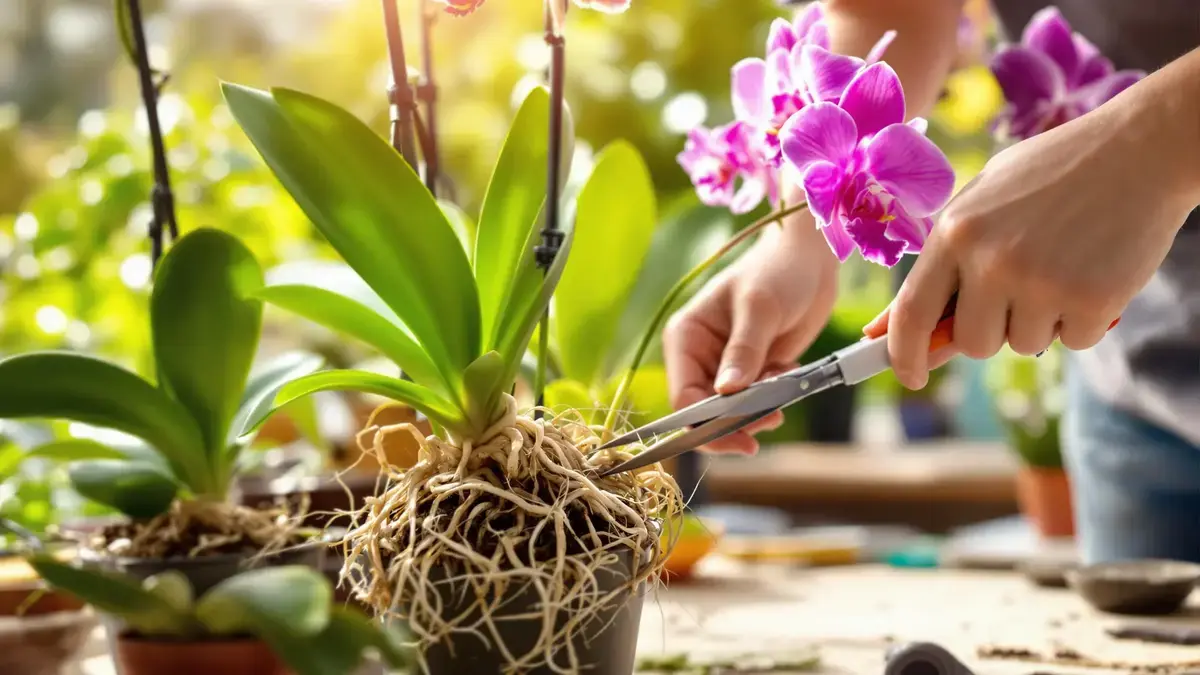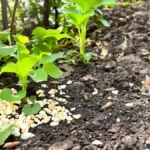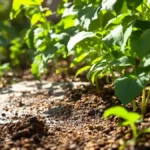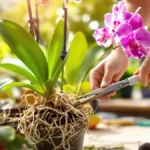The health of orchids relies on a carefully executed root trimming before spring arrives. Essential for photosynthesis, respiration, and moisture absorption, the roots should be regularly inspected. Cutting off those that are soft, brown, or black helps prevent rot and promotes better growth. With appropriate techniques and preventive care, orchids can thrive in an optimal environment, ensuring vibrant blooms.
The essential information
- Trimming the roots of orchids is vital for their health.
- Cutting damaged roots helps prevent rot and encourages growth.
- Cutting techniques: use clean tools and disinfect afterward.
- Only intervene when there are obvious signs or during repotting.
Orchids and root health
Orchids, those beautiful flowers that brighten our interiors, require special attention, particularly regarding root trimming. To optimize their health, regular intervention on the root system is almost essential before spring arrives. The roots play a key role in various vital processes such as photosynthesis, respiration, and moisture absorption, thus contributing to the growth and flourishing of these delicate plants.
Importance of healthy roots
It is crucial to understand that roots are not merely anchors in the soil; they are also the site of many essential functions. A healthy root promotes efficient photosynthesis, a fundamental element in the plant’s food production. Moreover, robust roots ensure good moisture and nutrient absorption, making orchids less vulnerable to diseases and environmental stress.
Root trimming process
When caring for orchids, it is vital to cut off damaged roots, which helps prevent rot. Identifying unhealthy roots is essential: those that are soft, brown, or black should be removed, especially during repotting. This action allows the plant to focus on developing new, healthy, vigorous roots.
Benefits of trimming
The advantages of cutting damaged roots are numerous. On one hand, it prevents the spread of diseases by eliminating infected parts. On the other hand, proper trimming enhances water and nutrient absorption, thus stimulating growth. Orchids then regain increased vigor, leading to more generous and lasting blooms.
Recommended techniques
To carry out root trimming, it is imperative to use clean, well-sharpened tools to avoid further damaging the plant. After trimming, disinfection of the tools is recommended to prevent any contamination. Carefully inspecting the roots before trimming ensures that only damaged parts are removed, thus protecting the rest of the root system.
Post-operation preparations
After cutting the damaged roots, several precautions must be taken. Watering should be moderate to avoid drowning the plant, as cut roots are often more vulnerable to excess water. Additionally, maintaining a high humidity level around the plant without exposing it to direct sunlight is advisable, as this could worsen post-operative stress.
Signs of necessary intervention
It is important to remain attentive to the signals the plant sends. Wilted leaves, a foul odor emanating from the substrate, or stagnation in growth are indicators that intervention is needed. By taking care to identify these signs, orchid owners can proactively act to maintain the health of their plants.
When to trim the roots
Root trimming is not an act to be performed blindly; it should only be carried out in cases of obvious signs of deterioration or during repotting. This preventive approach ensures the plant develops in a balanced and healthy manner without undergoing unnecessary stress.
Preventive care for orchids
To avoid root problems, preventive care should be implemented. Proper watering, well-draining substrate, and an optimal environment are key to ensuring root health. By providing these conditions, orchids can flourish, revealing all their beauty and elegance.
















